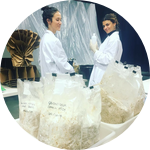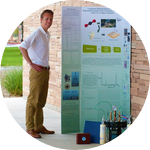Please wait...
About This Project
Farming animals for leather is a water, chemical, and energy-intensive process. Fungal "leather" could help address sustainability problems when farming and using animal leathers, as they can have similar structures to animal skins and perform physically like leathers. The research requires cross-linking fungal mycelium onto a bacterial cellulose matrix to improve fungal-mat flexibility, strength, and leather feel. We aim to refine protocols for these fungal-bacterial biocomposites.
More Lab Notes From This Project

Browse Other Projects on Experiment
Related Projects
Spatially controlling attachment of functional proteins to bacterial cellulose using optogenetics
The bacterium Komagataeibacter rhaeticus has the ability to naturally produce bacterial cellulose (BC) which...
New practicable, eco-friendly methods in the generation of sustainable transparent wood materials
Transparent wood (TW) is a lightweight, energy-efficient material engendering optical functionalities in...
Developing a production method for the synthesis of high quality monolayer Graphene sheets
Langmuir Blodgett monolayers of polyhalogenated benzene will be polymerized in-situ by photon mediated sigma...





